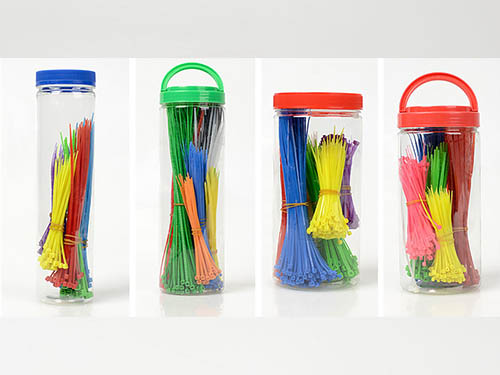How To Tighten Stainless Steel Zip Ties
Stainless steel zip ties, also known as cable ties or clamps, are an excellent choice for securing cables, pipes, or other items in various industrial, commercial, and home applications. Unlike plastic zip ties, stainless steel zip ties are more durable, corrosion-resistant, and capable of withstanding harsh environments, making them ideal for outdoor or heavy-duty use.
However, one of the most common questions that arise when using stainless steel zip ties is how to properly tighten them for maximum strength and security. This article will guide you through the process of tightening stainless steel zip ties, ensuring they function optimally for your needs.
What Are Stainless Steel Zip Ties?
Before diving into the tightening process, let’s quickly review what stainless steel zip ties are. These ties are made from a strong stainless steel band, often with a locking mechanism similar to traditional plastic zip ties. They are commonly used in situations where high tensile strength, fire resistance, or resistance to weathering and chemicals is required.
Stainless steel zip ties are frequently employed in:
- Industrial applications (e.g., securing cables in heavy machinery)
- Construction projects (e.g., bundling pipes or wire harnesses)
- Outdoor environments (e.g., for marine or automotive purposes)
How to Tighten Stainless Steel Zip Ties
Tightening stainless steel zip ties requires a few simple tools and steps. Here's how you can do it:
1. Choose the Right Stainless Steel Zip Tie
- Stainless steel zip ties come in various sizes and tensile strengths. Before tightening, ensure you select the correct size and strength for the task at hand. A zip tie that is too small may not secure the object properly, while one that is too large could be more difficult to tighten and may waste material.
2. Insert the End into the Locking Mechanism
- Take one end of the stainless steel zip tie and feed it through the locking mechanism (the metal head of the tie). Similar to plastic zip ties, the metal band will pass through a ratchet mechanism that locks the tie in place as you tighten it.
3. Use a Tightening Tool (Cable Tie Tensioner)
- Unlike plastic zip ties, which can often be tightened by hand, stainless steel zip ties require a cable tie tensioner to achieve a secure fit. These tools are designed to pull the zip tie tightly around the object and ensure it is firmly secured.
- Cable tie tensioners are equipped with a mechanism that automatically tightens the tie to the desired tension. Some models also feature a built-in cutter that removes excess tie length once it has been fully tightened.
If you don’t have a tensioner, you can also manually pull the tie tight by using pliers or a similar tool. However, using a dedicated tensioning tool ensures the tie is tightened properly without overstraining the material.
4. Pull the Tie Tight
- If you are using a tensioning tool, engage the tool to tighten the tie. The tool will apply consistent force until the tie is secure, often automatically cutting off any excess length when the tie is tightened to the correct tension.
- If you are using pliers or another manual method, grip the zip tie with the pliers and apply steady pressure to pull the band as tight as possible. Be cautious not to overtighten, as this could damage the item being secured or cause the zip tie to snap.
5. Cut Off Excess Length
- Once the zip tie is tight, you will likely have some excess length protruding from the locking head. Most tensioning tools feature a cutting mechanism that trims the excess material. If you are not using a tensioning tool, simply use diagonal cutters or wire cutters to snip off the excess portion of the zip tie.
- Cutting off the excess prevents any sharp ends from posing a safety hazard or from snagging on surrounding materials.
6. Check the Tightness
- Once the zip tie is tightened, check to ensure it is securely holding the objects together. Gently pull on the secured items to verify that the tie is tight and effective. Stainless steel zip ties are designed to hold strong, but it’s always a good idea to check after installation.
Tips for Tightening Stainless Steel Zip Ties
-
Avoid Over-Tightening: While stainless steel zip ties are strong, over-tightening can lead to breakage or damage to the item being secured. Ensure the tie is tight enough to hold everything in place, but not so tight that it causes undue stress on the materials.
-
Use the Right Tool for the Job: Although manual tightening is possible with pliers, using a specialized cable tie tensioner will provide more consistent results, especially for larger projects.
-
Consider the Environment: If you're using stainless steel zip ties outdoors or in environments exposed to weathering or chemicals, ensure the zip tie you select is made for that specific environment. For example, some stainless steel zip ties are coated to provide extra protection against corrosion.
-
Check for Sharp Edges: After cutting off excess zip tie material, ensure there are no sharp edges remaining that could cause injury or damage other objects. If needed, file down any rough edges for added safety.
Conclusion
Tightening stainless steel zip ties is a straightforward process that requires the right tools and techniques. Whether you’re working on an industrial project, bundling cables, or securing components in outdoor environments, following the correct method ensures a secure, long-lasting bond. By using a cable tie tensioner and ensuring proper tightness, you can achieve optimal performance from your stainless steel zip ties while avoiding issues like over-tightening or damage to the materials being secured.
With the right approach, stainless steel zip ties can provide a reliable and durable solution for a wide range of applications, ensuring everything stays securely in place for the long haul.









